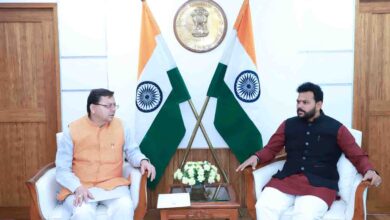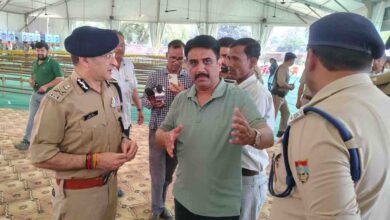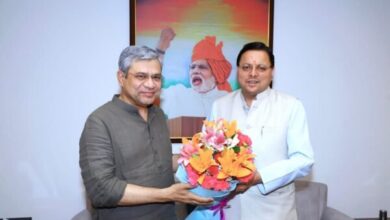Govt to revise girls’ legal age of marriage: Modi

Saturday, 17 October 2020 | PNS | New Delhi
PM says decision soon after report by panel set up for this purpose
Prime Minister Narendra Modi on Friday said the Government will soon take a decision on revising the minimum age of marriage for girls after it receives the report from the committee set up for the purpose.
He said he has been receiving letters from women from across the country, asking about the report of the committee and when the Government will take a decision on it. “I want to assure them, the Government will soon take its decision after the submission of the report,” Modi said.
Addressing a video conference here after releasing a commemorative coin of Rs 5 denomination on the 75th anniversary of the Food and Agriculture Organisation (FAO), the Prime Minister maintained: “There is an important deliberation going on to decide what should be the ideal age of marriage for daughters.”
He pointed out that the girls’ gross enrolment ratio in education has turned higher than that of boys for the first time in the country because of several efforts taken by the Government in the last six years.
On June 20, this year, the Women and Child Development Ministry set up the committee, headed by former Samata Party leader Jaya Jaitley, to review or reconsider the legal age for women.
Before 1978, the legal marriage age for the girl was 15 years. It was changed in 1978 by amending the erstwhile Sarda Act of 1929. As of now, a girl is allowed to get married legally when she is at least 18 years old.
The task force’s mandate is to examine the correlation of the age of marriage and motherhood with health, medical well-being and nutritional status of mother and neonate/infant/child, during pregnancy, birth and thereafter; key parameters like Infant Mortality Rate, Maternal Mortality Rate, Total Fertility Rate, Sex Ratio at Birth, Child Sex Ratio and any other relevant points pertaining to health and nutrition in this context.
In many rural areas of India, girls are routinely married before 18 years with the approval of communities which is illegal. Orthodox sections back child marriages citing religion. The time seemed to have not moved for the child-marriage backers since Raja Ram Mohan Roy first opposed child marriages in the second-half of the 19th century and was actively supported by British Governor-General Lord Willian Bentick.
Anemia and malnutrition are known to be the result of underage marriages in India which has one of the largest numbers of child-marriages in the world even though the law has set 18 as the age of marriage for women and 21 for men.
In his Independence Day speech, the PM had announced that the Government was deliberating on what should be the minimum age of marriage for women and has set up a committee to look into the matter.
Modi highlighted the efforts taken by his Government in the last six years to fight against malnutrition.
The Prime Minister said his government has taken an integrated and holistic approach to deal with the challenge of malnutrition.
The Government has adopted a multi-dimensional strategy to work on all those factors responsible for high malnutrition, he said adding the Government has started National Nutrition Mission.
Highlighting other achievements, the Prime Minister said the Government has built 11 crore toilets across the country under the Swachh Bharat Mission and has launched Jal Jeevan Mission to provide piped drinking water.
The Government is also providing sanitary pads at Rs 1 to poor women, he further said.
“Because of these efforts, for the first time, the gross enrolment ratio of girls in education is more than that of boys,” Modi said.






